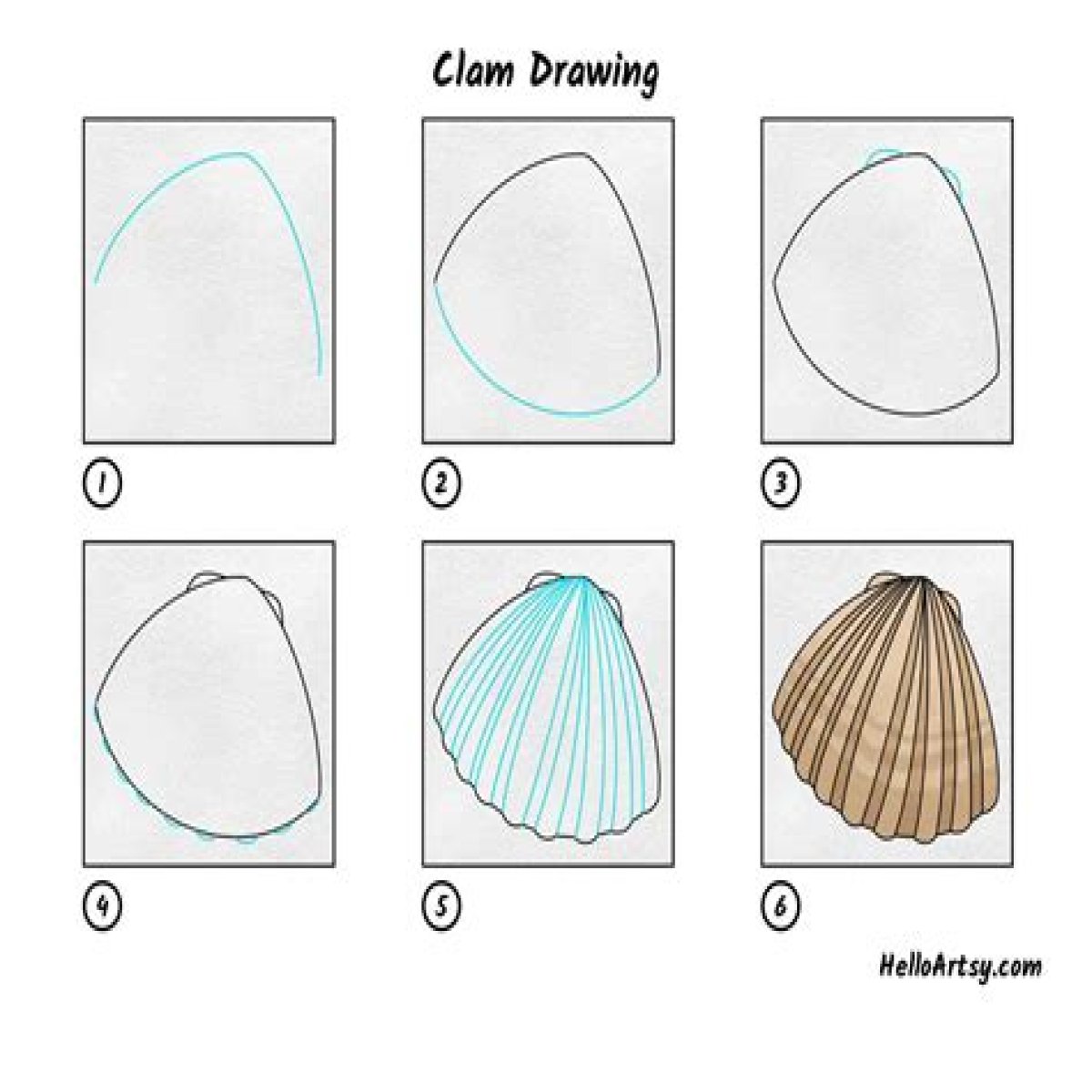Open clam drawing, a valuable technique in the realm of art, invites us to explore its intricacies and significance.
Open clam drawing is an artistic practice that captures the essence of a clam's anatomy by showcasing its internal structures, such as the gills, mantle, and adductor muscles, through apresentation.
This approach not only allows artists to delve into the intricate details of the clam's internal workings but also serves as a means of understanding the creature's biology and ecology. By studying open clam drawings, researchers can gain insights into the clam's feeding mechanisms, respiratory system, and muscular structure, enriching our knowledge of these fascinating marine invertebrates.
Moreover, open clam drawing holds educational value. It provides an accessible way for students and enthusiasts to visualize and comprehend the internal anatomy of clams, complementing classroom lessons and textbooks. Through detailed illustrations, aspiring biologists can observe the arrangement and function of various organs, fostering a deeper understanding of invertebrate zoology.
Furthermore, open clam drawing contributes to the preservation of scientific knowledge. As a visual record, these drawings document the morphology of different clam species, serving as a valuable resource for taxonomists and ecologists. By comparing open clam drawings of various specimens, researchers can identify distinguishing characteristics, aiding in species identification and classification.
In conclusion, open clam drawing stands as a valuable technique in art, science, and education. It offers a unique perspective into the internal anatomy of clams, facilitating artistic expression, scientific research, and educational enrichment. As we continue to unravel the mysteries of the natural world, open clam drawing remains a crucial tool in our pursuit of knowledge and understanding.
Open Clam Drawing FAQs
This section addresses frequently asked questions about open clam drawing, providing concise and informative answers to common concerns and misconceptions.
Question 1: What is the primary purpose of open clam drawing?
Answer: Open clam drawing serves multiple purposes. In the realm of art, it allows artists to capture the intricate details of a clam's internal anatomy for aesthetic and representational purposes. In science, it aids in the study of clam biology and ecology, providing valuable insights into their morphology, feeding mechanisms, and other physiological aspects.
Question 2: How does open clam drawing contribute to scientific research?
Answer: Open clam drawings serve as visual records of clam morphology, aiding taxonomists and ecologists in species identification and classification. By comparing open clam drawings of different specimens, researchers can identify distinguishing characteristics, enhancing our understanding of clam diversity and evolution.
Conclusion
Open clam drawing has proven to be an invaluable tool in art, science, and education. It provides a unique perspective into the internal anatomy of clams, facilitating artistic expression, scientific research, and educational enrichment.
As we continue to unravel the mysteries of the natural world, open clam drawing will undoubtedly remain a crucial tool in our pursuit of knowledge and understanding. It is an art form that not only captures the beauty and complexity of these marine creatures but also contributes to our scientific understanding and appreciation of the natural world.
Must-Know Insights About Osayi Samue: A Comprehensive GuideDiscover The Enchanting Gallura Region Of SardiniaUltimate Guide To Drawing Realistic Bicycle Pictures
an image of a shell with a pearl in it
Clam Drawing clam draws clam ocs clams ocs clam answers onria
